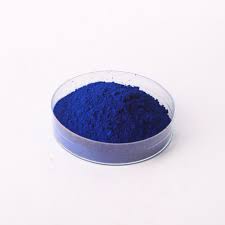indigo dye manufacturers
Indigo Dye Manufacturers A Deep Dive into History, Processes, and Sustainable Practices
Indigo dye, one of the oldest dyes used throughout history, has made a remarkable resurgence in recent years due to the growing demand for natural and sustainable textiles. The rich, deep blue hue that indigo imparts to fabric has captivated artists and designers for centuries. This article explores the world of indigo dye manufacturers, their historical significance, modern production processes, and the shift towards sustainability.
Historical Significance of Indigo Dye
The history of indigo dye dates back thousands of years, with its usage traced to ancient civilizations in India, Egypt, and China. The name indigo is derived from the Latin *indicum*, meaning from India. In many cultures, indigo was not just a dye but a symbol of wealth and status. The process of extracting indigo from plants, primarily *Indigofera tinctoria*, was labor-intensive, involving fermentation and oxidation. Throughout history, indigo was traded extensively, forming part of the commerce in the colonial era, especially in the Americas, where plantation-grown indigo became a pivotal cash crop.
Modern Indigo Dye Manufacturing
Today, the manufacturing of indigo dye has evolved significantly while still honoring traditional practices. The modern indigo production process generally involves several stages cultivation, harvesting, extraction, and dyeing.
1. Cultivation Indigo plants are grown in many regions globally, including India, Africa, and parts of Asia. The plants flourish in subtropical climates with plenty of sunlight and well-drained soil.
2. Harvesting Once the plants reach maturity, the leaves are harvested. Traditionally, this process would occur several times during the growing season to maximize yield.
3. Extraction After harvesting, the leaves undergo a fermentation process to extract the indigo pigment. This typically takes place in large vats where water is added to the leaves, creating an anaerobic environment that promotes the growth of bacteria. This process converts the indigo precursors present in the leaves into water-soluble indigo white.
indigo dye manufacturers

4. Oxidation The next step is oxidation, where the indigo white is exposed to air, causing it to turn into the insoluble blue dye. This transformation is a magical moment in the dyeing process, and it requires skill to achieve the perfect indigo hue.
5. Dyeing The dyeing process can vary depending on the manufacturer and the desired end product. Fabrics immersed in the indigo dye vats can take on different shades of blue depending on the duration of exposure.
The Shift Towards Sustainable Practices
With increasing awareness of environmental issues, many indigo dye manufacturers are embracing sustainable practices. Traditional chemical dyes are often petroleum-based and can harm both the environment and human health. In contrast, natural indigo, derived from plant sources, is biodegradable and non-toxic.
A notable trend is the return to organic farming methods for cultivating indigo plants. This involves avoiding synthetic fertilizers and pesticides, promoting biodiversity, and reducing the carbon footprint associated with cultivation. Brands focusing on sustainable indigo are also emphasizing fair labor practices, ensuring that workers are paid fairly and work in safe conditions.
Furthermore, some manufacturers are innovating by utilizing the by-products of the indigo dyeing process. For example, the fermentation process leaves behind a significant amount of biomass, which can be repurposed as fertilizer or even converted into bioenergy. This not only showcases a commitment to sustainability but also enhances the overall circular economy of fabric production.
Conclusion
Indigo dye manufacturers play a crucial role in the textile industry, blending a rich historical legacy with modern innovation and sustainability. As consumers increasingly seek eco-friendly options, the demand for natural dyes like indigo is set to rise. The journey from indigo plant cultivation to dyeing fabric reflects a broader trend towards responsible manufacturing practices that respect the planet. By prioritizing sustainability and ethics, indigo dye manufacturers are not just preserving a timeless art but also paving the way for a greener future in the textile industry. The deep blue color synonymous with indigo will continue to inspire creativity and craftsmanship for generations to come.
-
The Timeless Art of Denim Indigo Dye
NewsJul.01,2025
-
The Rise of Sulfur Dyed Denim
NewsJul.01,2025
-
The Rich Revival of the Best Indigo Dye
NewsJul.01,2025
-
The Enduring Strength of Sulphur Black
NewsJul.01,2025
-
The Ancient Art of Chinese Indigo Dye
NewsJul.01,2025
-
Industry Power of Indigo
NewsJul.01,2025
-
Black Sulfur is Leading the Next Wave
NewsJul.01,2025

Sulphur Black
1.Name: sulphur black; Sulfur Black; Sulphur Black 1;
2.Structure formula:
3.Molecule formula: C6H4N2O5
4.CAS No.: 1326-82-5
5.HS code: 32041911
6.Product specification:Appearance:black phosphorus flakes; black liquid

Bromo Indigo; Vat Bromo-Indigo; C.I.Vat Blue 5
1.Name: Bromo indigo; Vat bromo-indigo; C.I.Vat blue 5;
2.Structure formula:
3.Molecule formula: C16H6Br4N2O2
4.CAS No.: 2475-31-2
5.HS code: 3204151000 6.Major usage and instruction: Be mainly used to dye cotton fabrics.

Indigo Blue Vat Blue
1.Name: indigo blue,vat blue 1,
2.Structure formula:
3.Molecule formula: C16H10N2O2
4.. CAS No.: 482-89-3
5.Molecule weight: 262.62
6.HS code: 3204151000
7.Major usage and instruction: Be mainly used to dye cotton fabrics.

